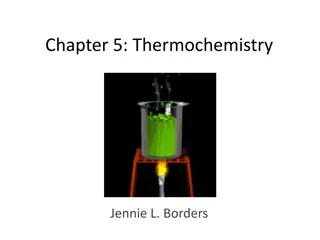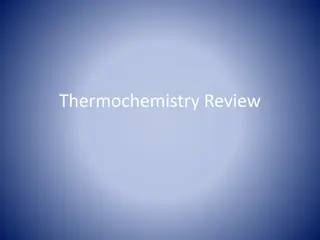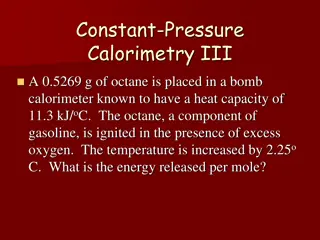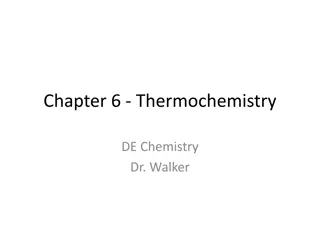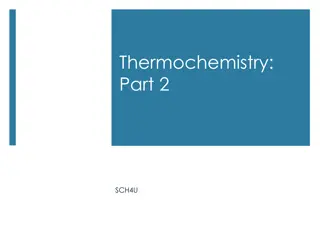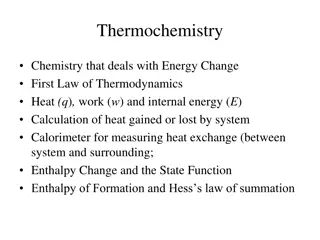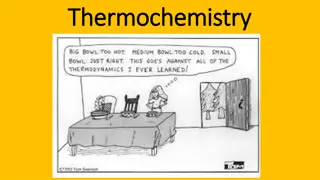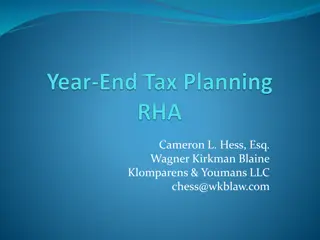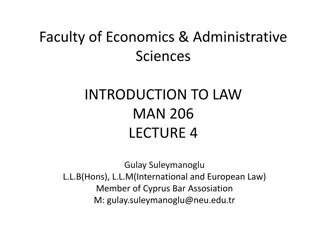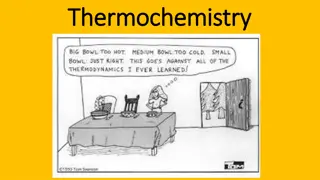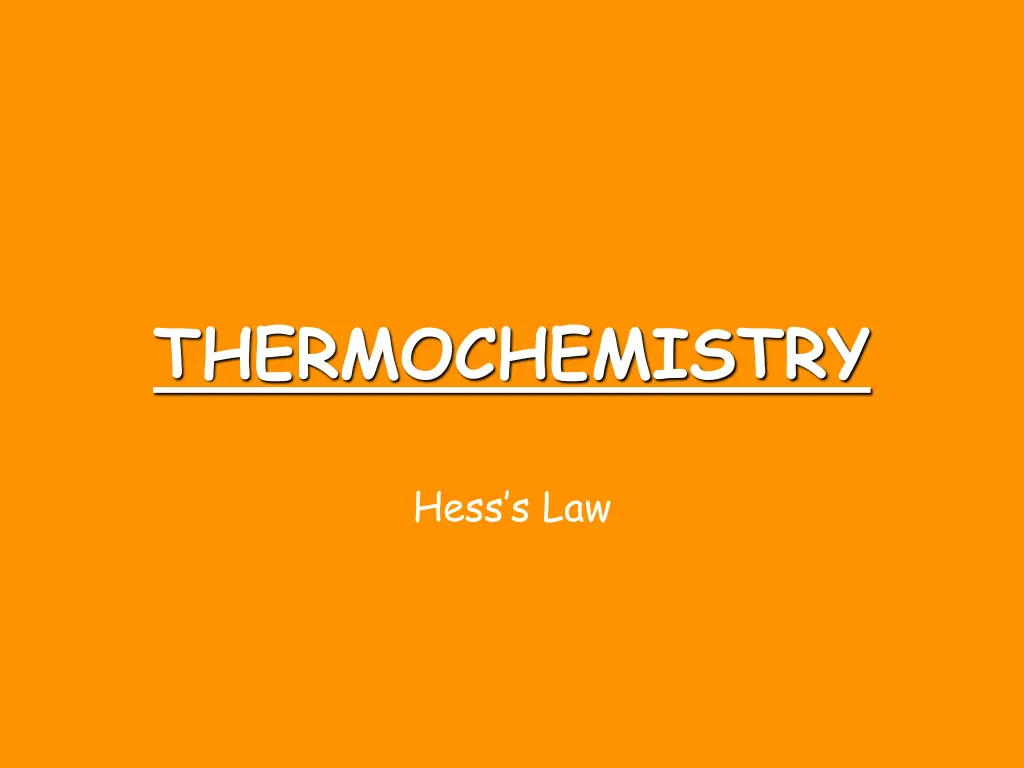
Thermodynamics and Hess's Law
Understanding thermodynamics, Hess's Law, enthalpy changes, and relationships involving enthalpy in chemical reactions. Exploring standard conditions, enthalpy of formation, and using Hess's Law to determine enthalpy change for a specific reaction. Dive into the world of thermochemistry!
Download Presentation

Please find below an Image/Link to download the presentation.
The content on the website is provided AS IS for your information and personal use only. It may not be sold, licensed, or shared on other websites without obtaining consent from the author. If you encounter any issues during the download, it is possible that the publisher has removed the file from their server.
You are allowed to download the files provided on this website for personal or commercial use, subject to the condition that they are used lawfully. All files are the property of their respective owners.
The content on the website is provided AS IS for your information and personal use only. It may not be sold, licensed, or shared on other websites without obtaining consent from the author.
E N D
Presentation Transcript
THERMOCHEMISTRY Hess s Law
Hesss Law In going from a particular set of reactants to a particular set of products, the change in enthalpy is the same whether the reaction takes place in one step or a series of steps.
Hesss Law
Relationships Involving Hrxn When reaction is multiplied by a factor, Hrxn is multiplied by that factor. Because Hrxn is extensive, C(s) + O2(g) CO2(g) H= 393.5 kJ 2 C(s) + 2 O2(g) 2 CO2(g) H= 2( 393.5 kJ) = 787.0 kJ. If a reaction is reversed, then the sign of H is changed. CO2(g) C(s) + O2(g) H = +393.5 kJ
Standard Conditions The standard state is the state of a material at a defined set of conditions. Pure gas at exactly 1 atm pressure Pure solid or liquid in its most stable form at exactly 1 atm pressure and temperature of interest Usually 25 C Substance in a solution with concentration 1 M
Standard Conditions The standard enthalpy change, H , is the enthalpy change when all reactants and products are in their standard states.
Standard Conditions The standard enthalpy of formation, Hf , is the enthalpy change for the reaction forming 1 mole of a pure compound from its constituent elements. The elements must be in their standard states. The Hf for a pure element in its standard state = 0 kJ/mol.
CH4(g)+ 2 O2(g) CO2(g) + 2H2O(g) C(s, graphite) + 2 H2(g) CH4(g) Hf = 74.6 kJ/mol CH4 C(s, graphite) + O2(g) CO2(g) Hf = 393.5 kJ/mol CO2 Hf = 241.8 kJ/mol H2O H2(g) + O2(g) H2O(g)
CH4(g)+ 2 O2(g) CO2(g) + 2H2O(g) H = + 74.6 kJ CH4(g) C(s, graphite) + 2 H2(g) C(s, graphite) + O2(g) CO2(g) Hf = 393.5 kJ/mol CO H = 483.6 kJ 2 H2(g) + O2(g) 2 H2O(g) CH4(g) + 2 O2(g) CO2(g) + 2 H2O(g) H = 802.5 kJ
Use Hesss Law to determine H for the following target reaction. N2 (g) + O2 (g) NO (g) H = 90.3 kJ NO (g) + Cl2 (g) NOCl (g) H = 38.6 kJ 2 NOCl (g) N2 (g) + O2 (g) + Cl2 (g) H = ? a) 51.7 kJ b) 51.7 kJ c) 103.4 kJ d) 103.4 kJ e) 142.0 kJ
Use Hesss Law to determine H for the following target reaction. N2(g) + O2(g) NO (g) NO (g) + Cl2(g) NOCl (g) H = 90.3 kJ H = 38.6 kJ H = ? 2 NOCl (g) N2(g) + O2(g) + Cl2(g) a) 51.7 kJ b) 51.7 kJ c) 103.4 kJ d) 103.4 kJ e) 142.0 kJ
FeO (s) + CO (g) Fe (s) + CO2 (g) Calculate the standard enthalpy change for this Rx from these Rx s of Iron Oxides w/ CO: [1] 3Fe2O3 + CO (g) 2Fe3O4 + CO2 (g) [2] Fe2O3 + 3CO (g) 2Fe (s) + 3CO2 (g) [3] Fe3O4 + CO (g) 3FeO (s) + CO2 (g) -53 kJ H = -47 kJ H = -25 kJ H = 19 kJ -3 kJ -41 kJ 22 kJ -11 kJ
FeO (s) + CO (g) Fe (s) + CO2 (g) Calculate the standard enthalpy change for this Rx from these Rx s of Iron Oxides w/ CO: [1] 3Fe2O3 + CO (g) 2Fe3O4 + CO2 (g) [2] Fe2O3 + 3CO (g) 2Fe (s) + 3CO2 (g) [3] Fe3O4 + CO (g) 3FeO (s) + CO2 (g) -53 kJ H = -47 kJ H = -25 kJ H = 19 kJ -3 kJ -41 kJ 22 kJ -11 kJ

